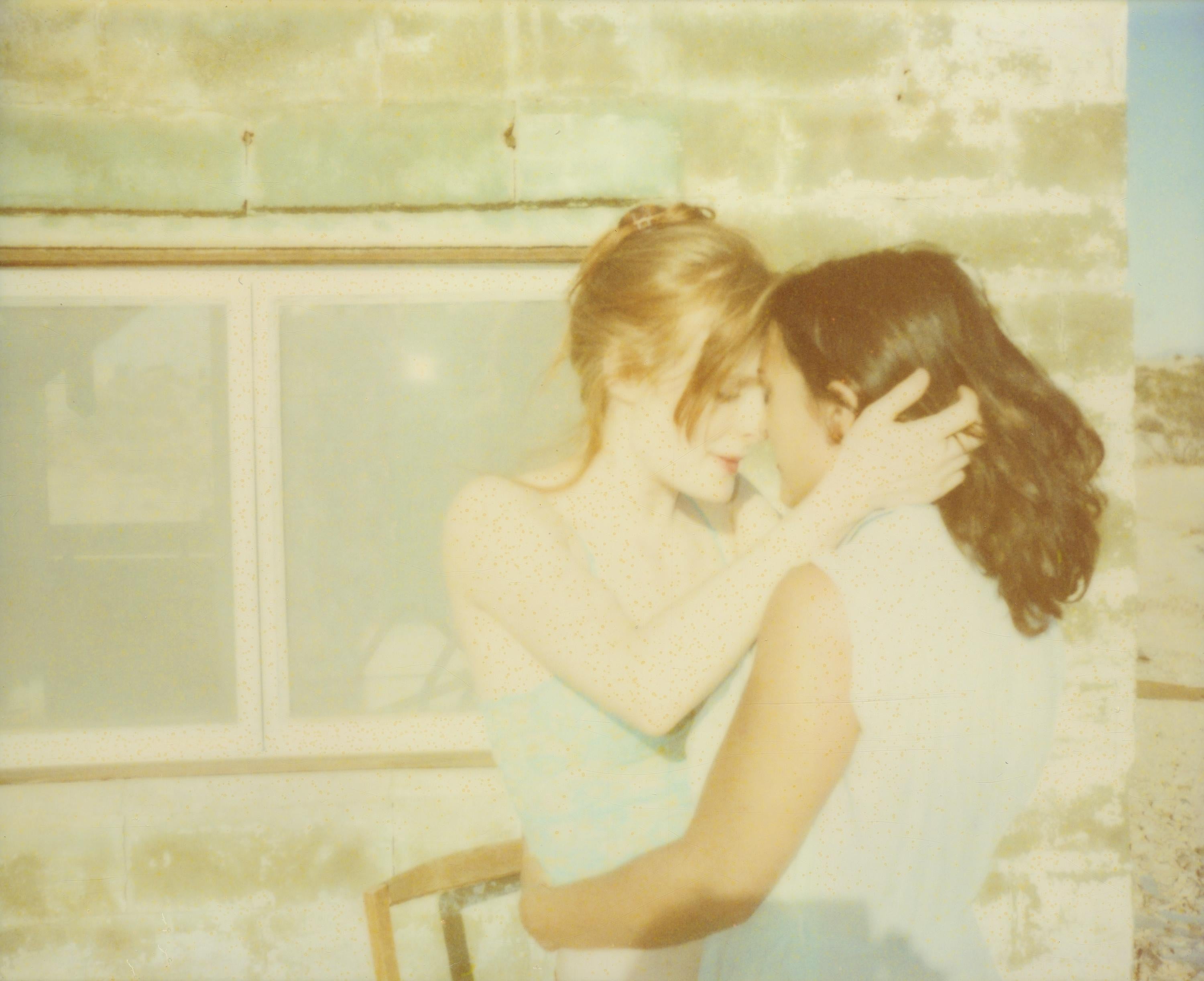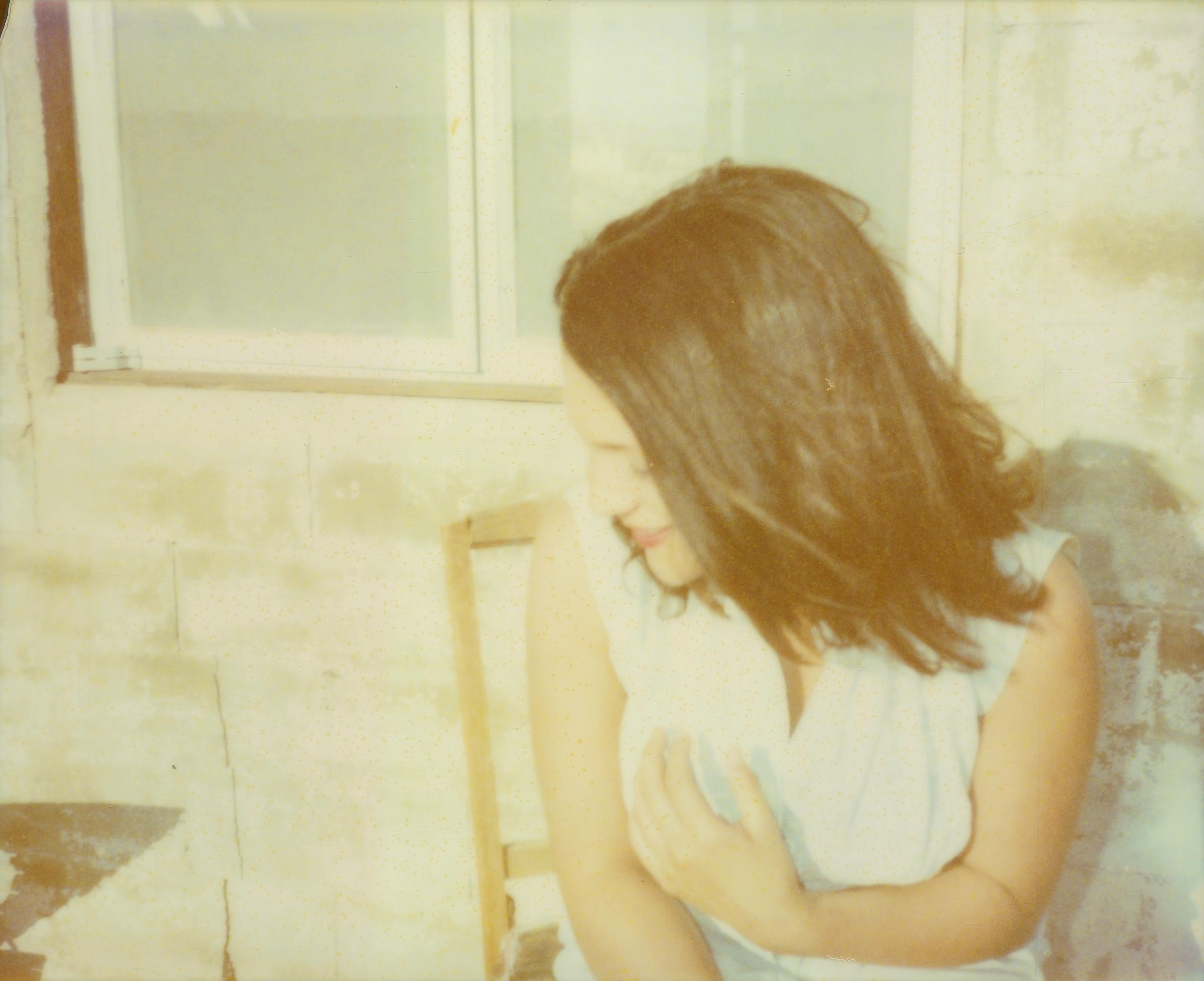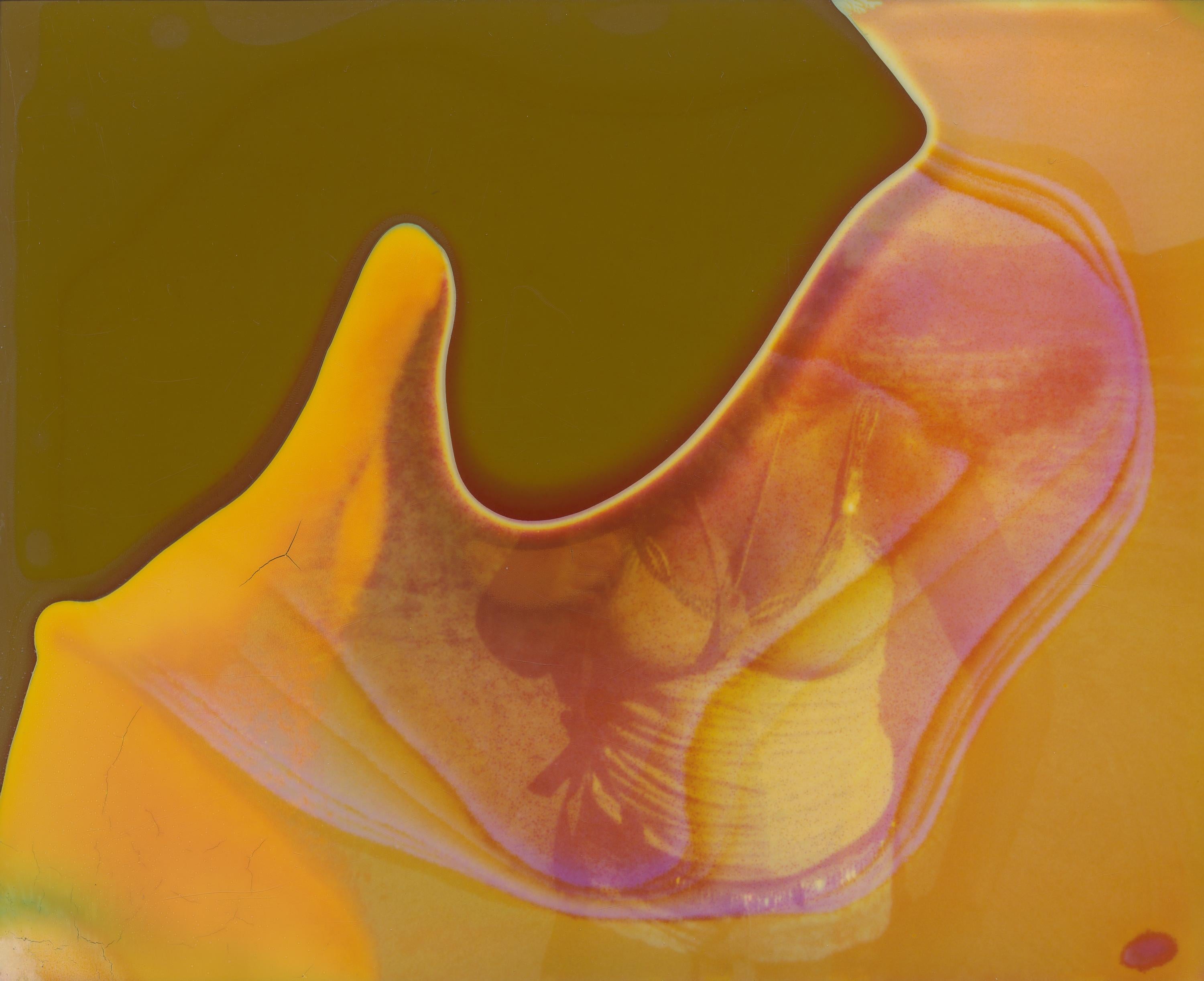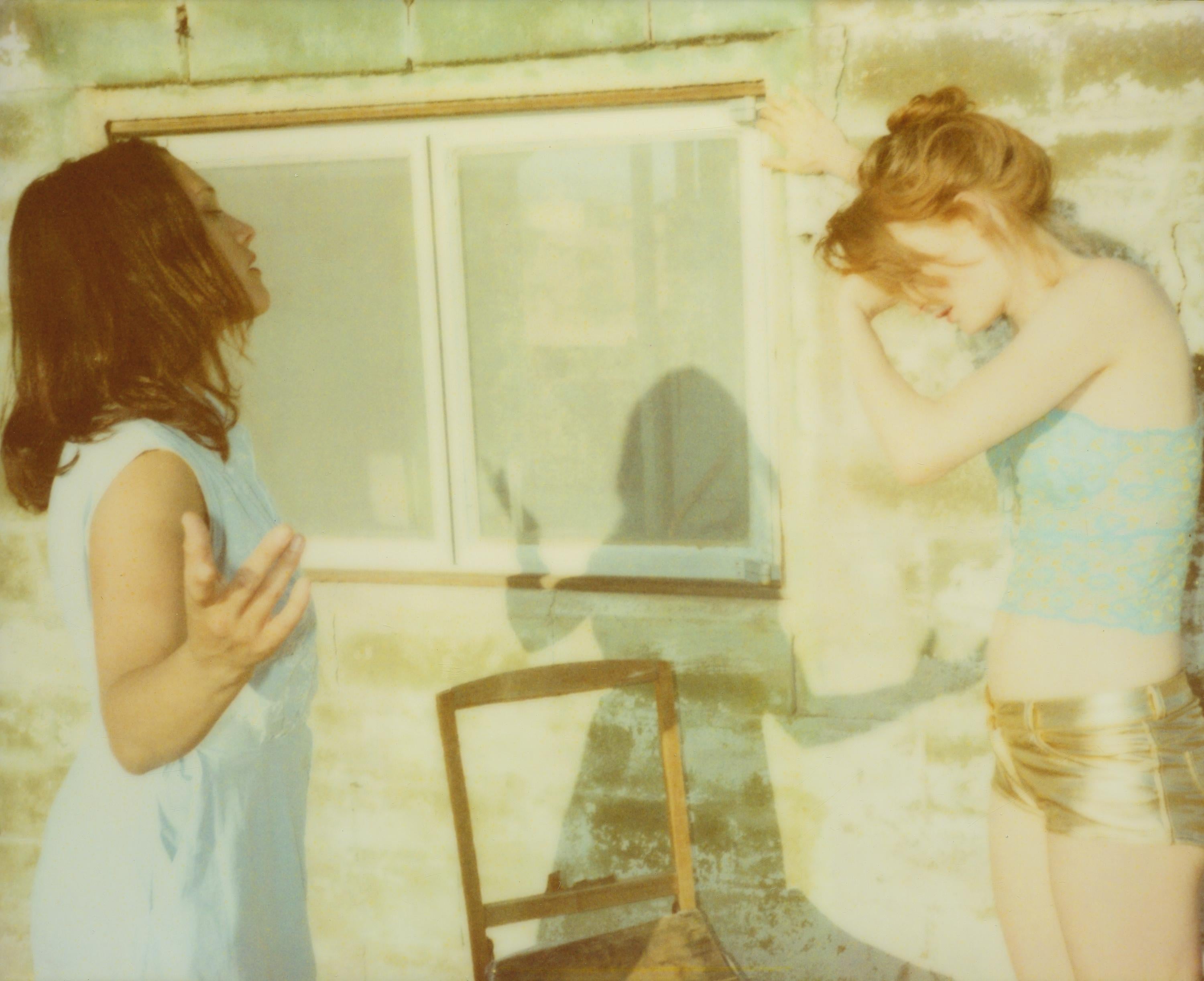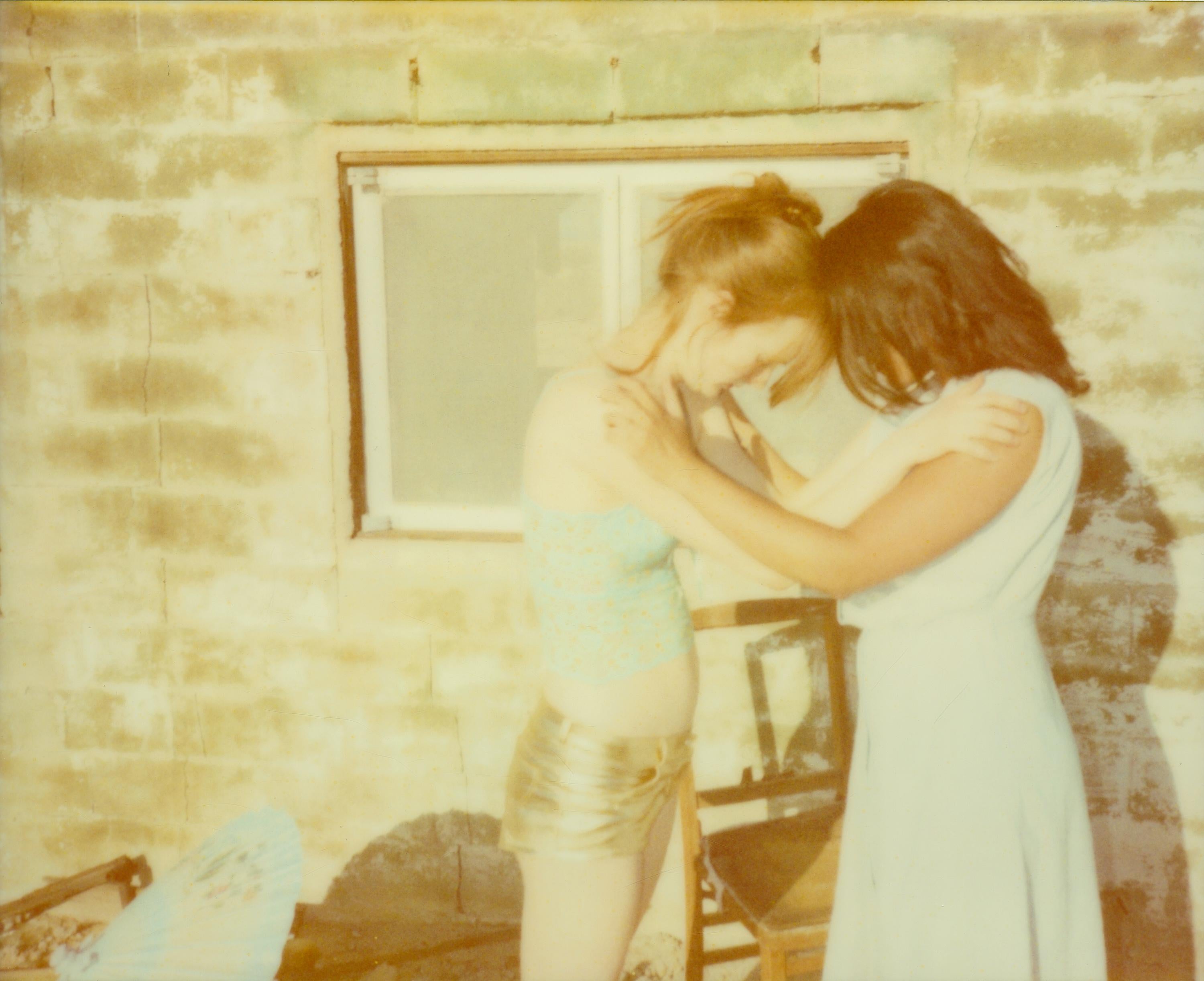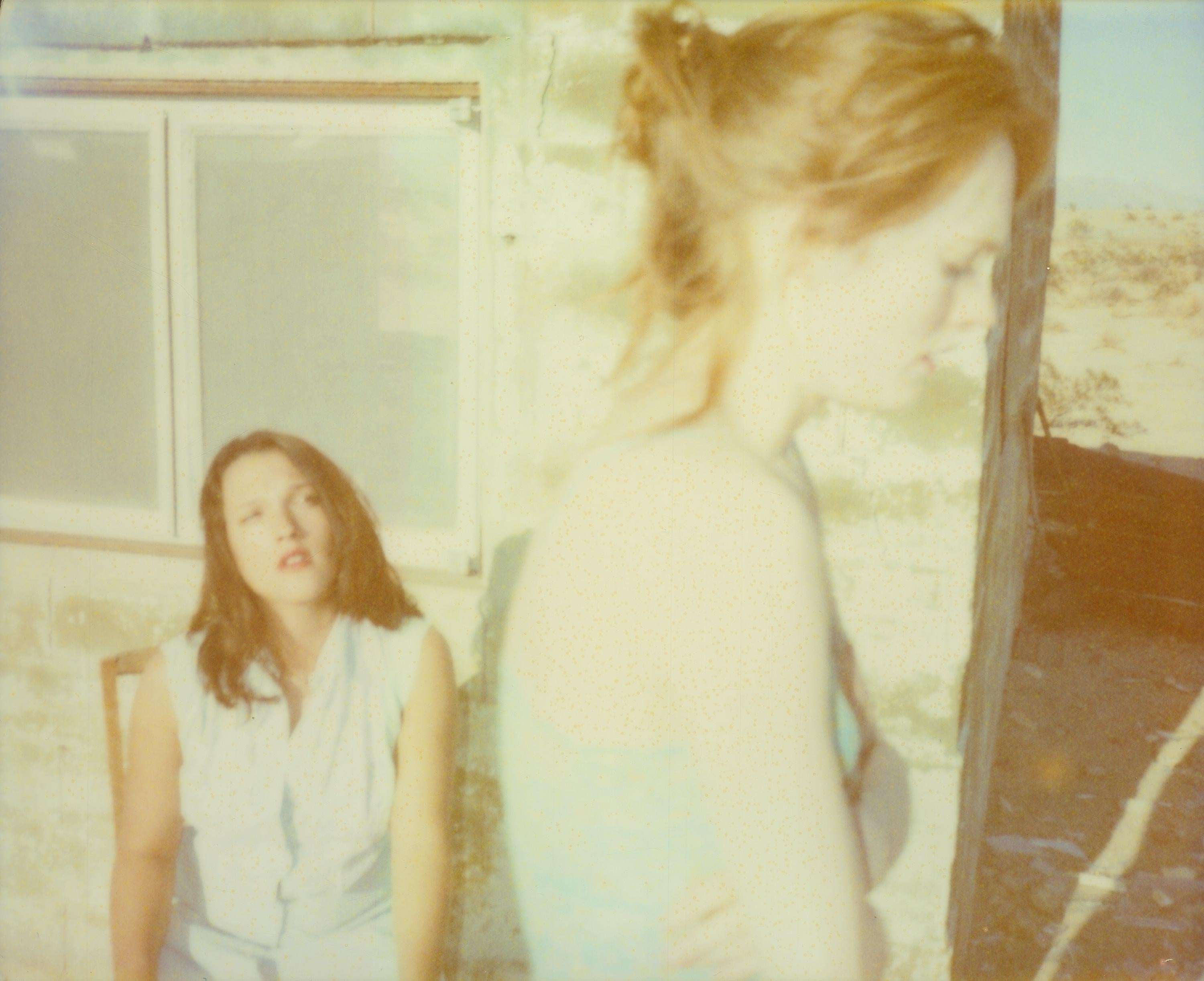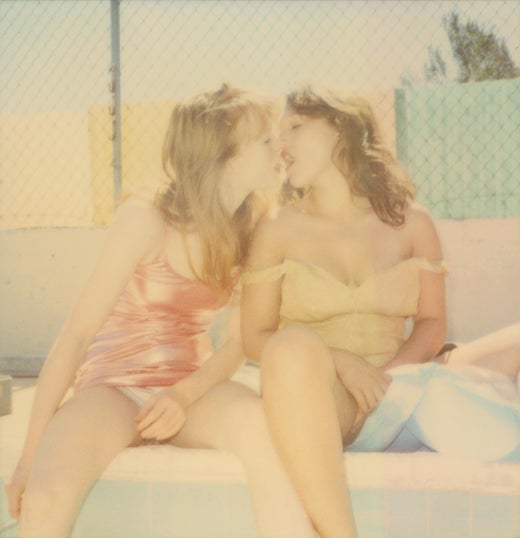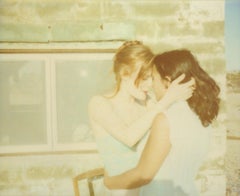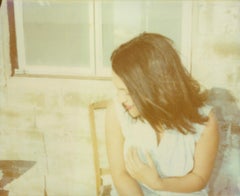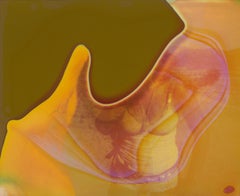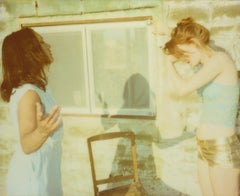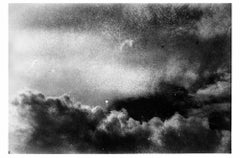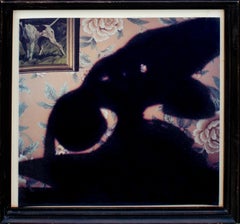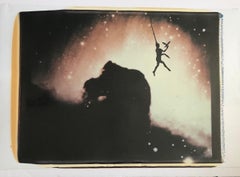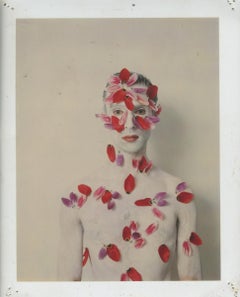Items Similar to Don't Give up on Us Baby (Till Death do us Part) - Contemporary, Polaroid
Want more images or videos?
Request additional images or videos from the seller
1 of 2
Stefanie SchneiderDon't Give up on Us Baby (Till Death do us Part) - Contemporary, Polaroid2005
2005
$266
$38030% Off
£200.74
£286.7830% Off
€229.82
€328.3130% Off
CA$375.15
CA$535.9330% Off
A$411.87
A$588.3830% Off
CHF 214.87
CHF 306.9630% Off
MX$4,984.15
MX$7,120.2230% Off
NOK 2,693.08
NOK 3,847.2630% Off
SEK 2,537.59
SEK 3,625.1330% Off
DKK 1,715.55
DKK 2,450.7830% Off
About the Item
Don't Give up on Us Baby (Till Death do us Part) - 2007
20x24cm,
Edition of 10 plus 2 Artist Proofs.
Archival C-Print, based on the original Polaroid.
Certificate and Signature label.
Artist Inventory #8920.
Not mounted.
A Star is Born
written by Ioana Velaneau
Published in EXBERLINER
The buzz that photographer Stefanie Schneider is enjoying right now will soon reverberate beyond the circle of interested parties: collectors, critics, gallery owners, friends and rivals. Soon, prices for her works will skyrocket and her name will be on the tongues of art-lovers in the know.
Whoever is interested in photography must take notice: Schneider is a star to be.
The Cuxhaven-born (Lower Saxony) 36-year-old was brought up on Super-8 films shot by her mother - she says she was born with a camera. Two decades and a MFA from the Folkwang Schule in Essen later, Schneider held her first solo exhibition in LA. Today, after numerous solo and group shows in the US, France, and Germany, she lives and works in between Berlin and LA. The two cities don't have the same status in her life’s work. While Berlin-Friedrichshain - where she got "sort of stuck"- has accommodated her post-production headquarters for the last three years, LA is her true love. As chance and a filmmaker boyfriend took her there seven years ago, she recalls: "As soon as I got off the plane I loved it. For the first time I could breathe and I felt free. LA is my city."
And what better place than the heart of the movie industry is there to feed the intensity of her dreamlike world. Schneider photographs with a sense of urgency, with a frenzy which fits to the Hollywood dream-factory. The care she puts into the staging of her photos, as well as the strong narratives implied in her work often conceived in series result in the construction of a fictionalized reality reminiscent of films. Her pictures unfold as if they were sequences taken from a photo-novella world, escaping the single moments associated with photography.
"If I place my bet on the present", Pascal wrote, "I stand to gain nothing - no more than what amounts to a fleeting instant." Schneider bets on that present, on that fleeting instant. The driving force behind her work seems to be this dream state, which leads her to try to make sense of the world's illusions through pictures, often of herself and her friends. Using long expired Polaroid film, which gives her photos (stained with chemicals) a prematurely aged, unreal look, she transforms landscapes, still-lives and the non-events of daily life - sleeping, driving a car, being bored - into poetic observations.
The images from LAST PICTURE SHOW come across as miniatures of reality, while shifting our visual and aesthetic experiences. They require a few moments to let their meaning set in. An image of a cemetery could easily be mistaken, at first sight, with an image of clouds drifting through the sky on a beautiful breezy summer day.
With HITCHHIKER, a three-minute video, Schneider takes a step further towards film narration. The work contemplates the burning attraction between two women, the pleasures and unreal easiness of the impromptu encounter, and seems to suggest no possible life beyond it. The soundtrack (a compilation of mostly her friends' music) envelops the audience and heightens the feeling of voluptuous tension and fragility.
In Schneider's work, real life and the artist's fantasy-world often interplay, in a fashion reminiscent of Sophie Calle's playful (and manipulative) use of her own life and privacy to create a life/fiction that sparks her art. The series SIDEWINDER, for example, was triggered by a failed love affair. As an antidote, the artist fictionalizes, i.e. takes off to the desert with a perfect stranger she met over the Internet: JD Rudometkin. The result? An album of tender and voyeuristic intimate moments of the two, offered up for us to share. But what appears as sequences of seemingly unguarded private moments, are, in reality, carefully constructed scenes - scripted by Jd him- self. Schneider is one of those artists for whom art is a means of survival, creation a hypnotic antidote to the spleen of life. The woman's very personality subdued at first, then, restless, whimsical and recklessly imaginative - makes you wonder what she would have become without the vital outlet of her photography.
- Creator:Stefanie Schneider (1968, German)
- Creation Year:2005
- Dimensions:Height: 7.88 in (20 cm)Width: 9.45 in (24 cm)Depth: 0.04 in (1 mm)
- Medium:
- Movement & Style:
- Period:
- Condition:
- Gallery Location:Morongo Valley, CA
- Reference Number:1stDibs: LU652314248092
Stefanie Schneider
Stefanie Schneider received her MFA in Communication Design at the Folkwang Schule Essen, Germany. Her work has been shown at the Museum for Photography, Braunschweig, Museum für Kommunikation, Berlin, the Institut für Neue Medien, Frankfurt, the Nassauischer Kunstverein, Wiesbaden, Kunstverein Bielefeld, Museum für Moderne Kunst Passau, Les Rencontres d'Arles, Foto -Triennale Esslingen., Bombay Beach Biennale 2018, 2019.
About the Seller
4.9
Platinum Seller
Premium sellers with a 4.7+ rating and 24-hour response times
Established in 1996
1stDibs seller since 2017
1,041 sales on 1stDibs
Typical response time: 4 hours
- ShippingRetrieving quote...Shipping from: Morongo Valley, CA
- Return Policy
Authenticity Guarantee
In the unlikely event there’s an issue with an item’s authenticity, contact us within 1 year for a full refund. DetailsMoney-Back Guarantee
If your item is not as described, is damaged in transit, or does not arrive, contact us within 7 days for a full refund. Details24-Hour Cancellation
You have a 24-hour grace period in which to reconsider your purchase, with no questions asked.Vetted Professional Sellers
Our world-class sellers must adhere to strict standards for service and quality, maintaining the integrity of our listings.Price-Match Guarantee
If you find that a seller listed the same item for a lower price elsewhere, we’ll match it.Trusted Global Delivery
Our best-in-class carrier network provides specialized shipping options worldwide, including custom delivery.More From This Seller
View AllDon't Give up on Us Baby (Till Death do us Part) - Contemporary, Polaroid
By Stefanie Schneider
Located in Morongo Valley, CA
Don't Give up on Us Baby (Till Death do us Part) - 2007
20x24cm,
Edition of 10 plus 2 Artist Proofs.
Archival C-Print, based on the original Polaroid.
Certificate and Signature...
Category
Early 2000s Contemporary Portrait Photography
Materials
Archival Paper, Photographic Paper, C Print, Color, Polaroid
You don't love me! (Till Death do us Part) - Contemporary, Polaroid
By Stefanie Schneider
Located in Morongo Valley, CA
You don't love me! (Till Death do us Part) - 2008
20x24cm,
Edition of 10 plus 2 Artist Proofs.
Archival C-Print, based on the original Polaroid.
Certificate and Signature label...
Category
Early 2000s Contemporary Portrait Photography
Materials
Archival Paper, Photographic Paper, C Print, Color, Polaroid
Living in a Dream (Till Death do us Part) - Contemporary, Polaroid, Women
By Stefanie Schneider
Located in Morongo Valley, CA
Living in a Dream (Till Death do us Part) - 2005
20x20cm,
Edition of 10,
Archival C-Print print, based on the Polaroid.
Certificate and Signature label, artist Inventory No. 9781.
Not mounted.
on offer is a piece from the movie "Till Death do us Part"
Stefanie Schneider’s Till Death Do Us Part
or “There is Only the Desert for You.”
BY DREW HAMMOND
Stefanie Schneider’s Til Death to Us Part is a love narrative that comprises three elements:
1.
A montage of still images shot and elaborated by means of her signature technique of using Polaroid formats with outdated and degraded film stock in natural light, with the resulting im ages rephotographed (by other means) enlarged and printed in such a way as to generate further distortions of the image.
2.
Dated Super 8 film footage without a sound track and developed by the artist.
3.
Recorded off-screen narration of texts written by the actors or photographic subjects, and selected by the artist.
At the outset, this method presupposes a tension between still and moving image; between the conventions about the juxtaposition of such images in a moving image presentation; and, and a further tension between the work’s juxtaposition of sound and image, and the conventional relationship between sound and image that occurs in the majority of films. But Till Death Do Us Part also conduces to an implied synthesis of still and moving image by the manner in which the artist edits or cuts the work.
First, she imposes a rigorous criterion of selection, whether to render a section as a still or moving image. The predominance of still images is neither an arbitrary residue of her background as a still photographer—in fact she has years of background in film projects; nor is it a capricious reaction against moving picture convention that demands more moving images than stills. Instead, the number of still images has a direct thematic relation to the fabric of the love story in the following sense. Stills, by definition, have a very different relationship to time than do moving images. The unedited moving shot occurs in real time, and the edited moving shot, despite its artificial rendering of time, all too 2009often affords the viewer an even greater illusion of experiencing reality as it unfolds. It is self-evident that moving images overtly mimic the temporal dynamic of reality.
Frozen in time—at least overtly—still photographic images pose a radical tension with real time. This tension is all the more heightened by their “real” content, by the recording aspect of their constitution. But precisely because they seem to suspend time, they more naturally evoke a sense of the past and of its inherent nostalgia. In this way, they are often more readily evocative of other states of experience of the real, if we properly include in the real our own experience of the past through memory, and its inherent emotions.
This attribute of stills is the real criterion of their selection in Til Death Do Us Part where consistently, the artist associates them with desire, dream, memory, passion, and the ensemble of mental states that accompany a love relationship in its nascent, mature, and declining aspects.
A SYNTHESIS OF MOVING AND STILL IMAGES BOTH FORMAL AND CONCEPTUAL
It is noteworthy that, after a transition from a still image to a moving image, as soon as the viewer expects the movement to continue, there is a “logical” cut that we expect to result in another moving image, not only because of its mise en scène, but also because of its implicit respect of traditional rules of film editing, its planarity, its sight line, its treatment of 3D space—all these lead us to expect that the successive shot, as it is revealed, is bound to be another moving image. But contrary to our expectation, and in delayed reaction, we are startled to find that it is another still image.
One effect of this technique is to reinforce the tension between still and moving image by means of surprise. But in another sense, the technique reminds us that, in film, the moving image is also a succession of stills that only generate an illusion of movement. Although it is a fact that here the artist employs Super 8 footage, in principle, even were the moving images shot with video, the fact would remain since video images are all reducible to a series of discrete still images no matter how “seamless” the transitions between them.
Yet a third effect of the technique has to do with its temporal implication. Often art aspires to conflate or otherwise distort time. Here, instead, the juxtaposition poses a tension between two times: the “real time” of the moving image that is by definition associated with reality in its temporal aspect; and the “frozen time” of the still image associated with an altered sense of time in memory and fantasy of the object of desire—not to mention the unreal time of the sense of the monopolization of the gaze conventionally attributed to the photographic medium, but which here is associated as much with the yearning narrator as it is with the viewer.
In this way, the work establishes and juxtaposes two times for two levels of consciousness, both for the narrator of the story and, implicitly, for the viewer:
A) the immediate experience of reality, and
B) the background of reflective effects of reality, such as dream, memory, fantasy, and their inherent compounding of past and present emotions.
In addition, the piece advances in the direction of a Gesammtkunstwerk, but in a way that reconsiders this synaesthesia as a unified complex of genres—not only because it uses new media that did not exist when the idea was first enunciated in Wagner’s time, but also because it comprises elements that are not entirely of one artist’s making, but which are subsumed by the work overall. The totality remains the vision of one artist.
In this sense, Till Death Do Us Part reveals a further tension between the central intelligence of the artist and the products of other individual participants. This tension is compounded to the degree that the characters’ attributes and narrated statements are part fiction and part reality, part themselves, and part their characters. But Stefanie Schneider is the one who assembles, organizes, and selects them all.
THE RELATIONSHIP BETWEEN THIS IDEA (above) AND PHOTOGRAPHY
This selective aspect of the work is an expansion of idea of the act of photography in which the artistic photographer selects that which is already there, and then, by distortion, definition or delimitation, compositional and lighting emphasis, and by a host of other techniques, subsumes that which is already there to transform it into an image of the artist’s contrivance, one that is no less of the artist’s making than a work in any other medium, but which is distinct from many traditional media (such as painting) in that it retains an evocation of the tension between what is already there and what is of the artist’s making. Should it fail to achieve this, it remains, to that degree, mere illustration to which aesthetic technique has been applied with greater or lesser skill.
The way Til Death Do Us Part expands this basic principle of the photographic act, is to apply it to further existing elements, and, similarly, to transform them. These additional existing elements include written or improvised pieces narrated by their authors in a way that shifts between their own identities and the identities of fictional characters. Such characters derive partially from their own identities by making use of real or imagined memories, dreams, fears of the future, genuine impressions, and emotional responses to unexpected or even banal events. There is also music, with voice and instrumental accompaniment. The music slips between integration with the narrative voices and disjunction, between consistency and tension. At times it would direct the mood, and at other times it would disrupt.
Despite that much of this material is made by others, it becomes, like the reality that is the raw material of an art photo, subsumed and transformed by the overall aesthetic act of the manner of its selection, distortion, organization, duration, and emotional effect.
* * *
David Lean was fond of saying that a love story is most effective in a squalid visual environment. In Til Death Do Us Part, the squalor of the American desert...
Category
Early 2000s Contemporary Color Photography
Materials
Archival Paper, Photographic Paper, C Print, Color, Polaroid
It's over! (Till Death do us Part) - Polaroid, Figurative
By Stefanie Schneider
Located in Morongo Valley, CA
It's over! (Till Death do us Part) - 2008
20x24cm,
Edition of 10 plus 2 Artist Proofs.
Archival C-Print, based on the original Polaroid.
Certificate and Signature label.
Artist...
Category
Early 2000s Contemporary Color Photography
Materials
Archival Paper, Photographic Paper, C Print, Color, Polaroid
But I Love You (Till Death do us Part) - Polaroid, Figurative
By Stefanie Schneider
Located in Morongo Valley, CA
But I Love You! (Till Death do us Part) - 2008
20x24cm,
Edition of 10 plus 2 Artist Proofs.
Archival C-Print, based on the original Polaroid.
Certificate and Signature label.
A...
Category
Early 2000s Contemporary Color Photography
Materials
Archival Paper, Photographic Paper, C Print, Color, Polaroid
You're not taking care of me! (Till Death do us Part) - Polaroid, Figurative
By Stefanie Schneider
Located in Morongo Valley, CA
You're not taking care of me! (Till Death do us Part) - 2008
20x24cm,
Edition of 10 plus 2 Artist Proofs.
Archival C-Print, based on the original Polaroid.
Certificate and Signa...
Category
Early 2000s Contemporary Color Photography
Materials
Archival Paper, C Print, Color, Polaroid
You May Also Like
Expired_14_2020 - Photograph by Serena Zeppilli
Located in Roma, IT
This photograph Expired_14_2020 was taken by the Italian photographer Serena Zeppilli.
It is part of the series "I was looking for something that I...
Category
21st Century and Contemporary Contemporary Figurative Photography
Materials
Photographic Paper
Stephen Frailey Polaroid Print, 1988
Located in New York, NY
Stephen Frailey
Untitled, 1988
Polaroid print
Sight: 19 3/4 x 19 3/4 in.
Framed: 24 1/4 x 24 x 1 3/4 in.
Edition 2/3
Provenance:
Lieberman & Saul, New York
Stephen studied at the...
Category
1980s Contemporary Figurative Prints
Materials
Polaroid
Vintage 20X24 Format Polaroid Signed Surrealist Photograph Eve Sonneman Photo
By Eve Sonneman
Located in Surfside, FL
This is from a show at Sidney Janis Gallery and is from the estate of Joan Sonnabend.
Eve Sonneman (born in Chicago on 1946) is an American photographer and artist. She did a series ...
Category
1990s Contemporary Color Photography
Materials
Color, Polaroid
Untitled Polaroid 23, Unique Self Portrait Photograph by Dietmar Busse
By Dietmar Busse
Located in New York, NY
Untitled Polaroid 23, Unique Self Portrait Photograph by Dietmar Busse.
2001
Signed and dated in black ink, verso
Polaroid (Unique)
5 x 4 inches, image
Contact gallery for price.
Category
Early 2000s Contemporary Photography
Materials
Polaroid
Self Portrait
By Farah Marie Velten
Located in Hudson, NY
CURRENT EXHIBITION - runs through September 10th, 2017. Any framed photographs purchased during the show will be available then. If the exhibition piece is sold or the customer order...
Category
21st Century and Contemporary Color Photography
Materials
Archival Paper
Untitled (Aiden 12), Polaroid Transfer by Mark Beard
By Mark Beard
Located in New York, NY
This polaroid transfer by Mark Beard is offered by CLAMP in New York City.
Category
1990s Contemporary Photography
Materials
Archival Paper, Polaroid
